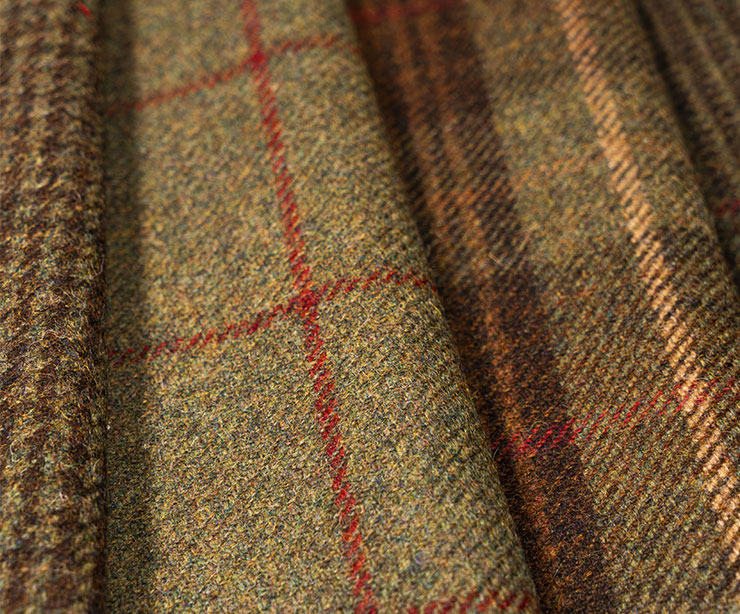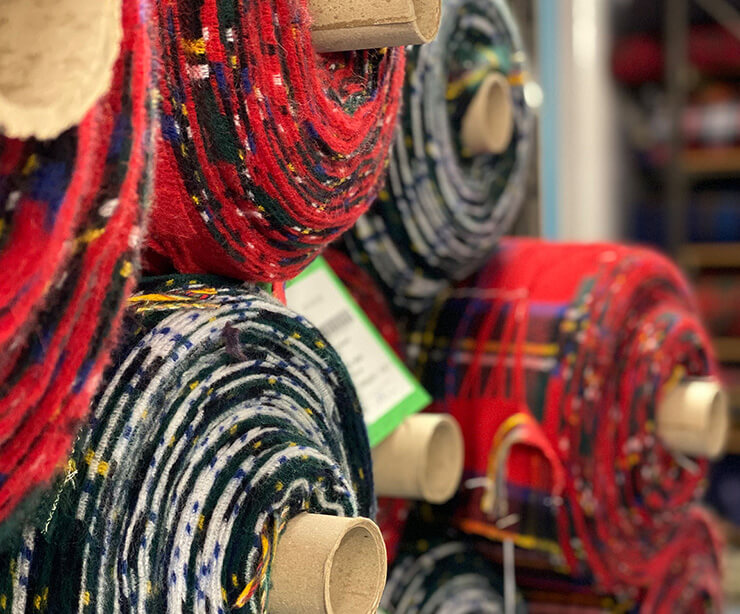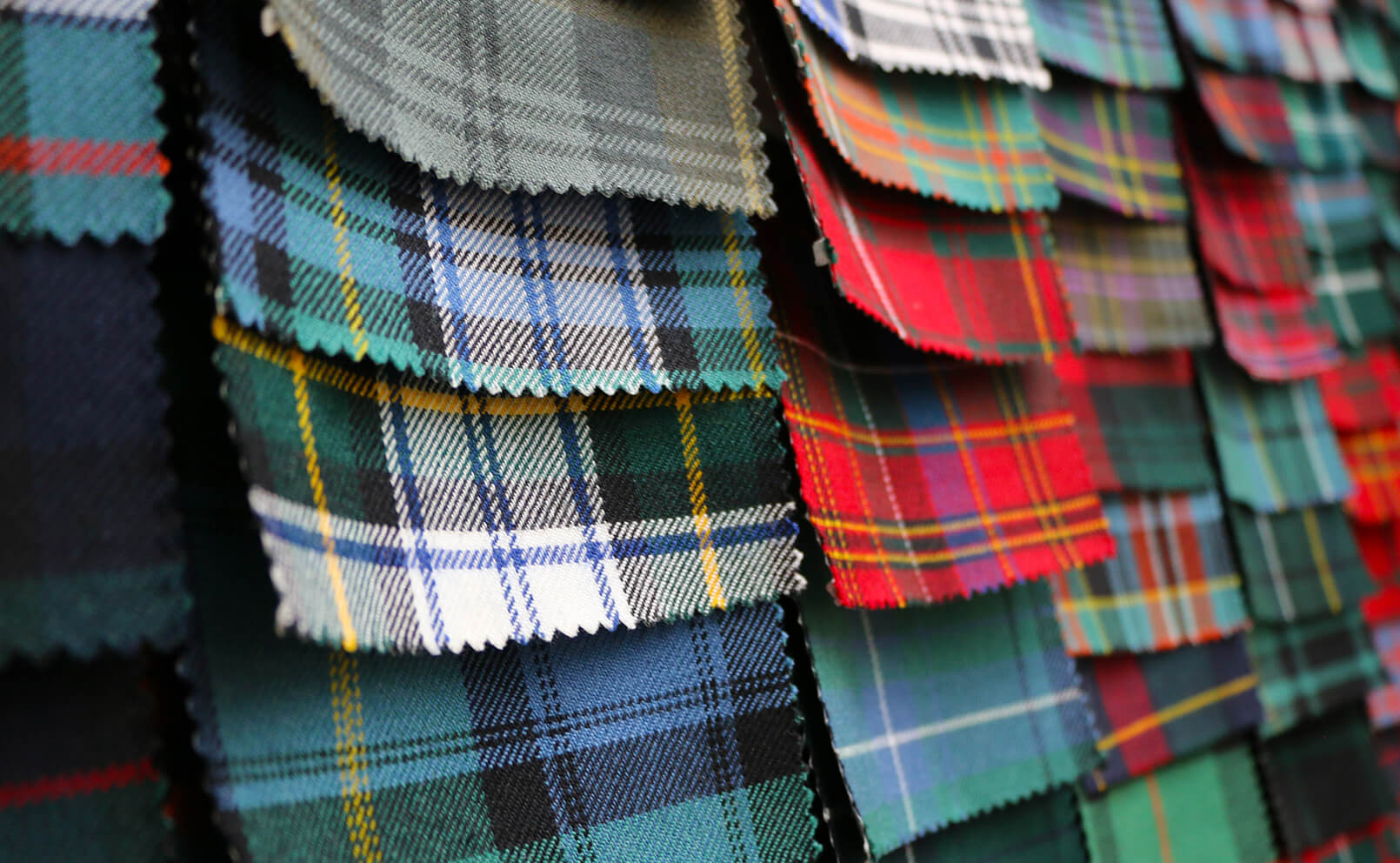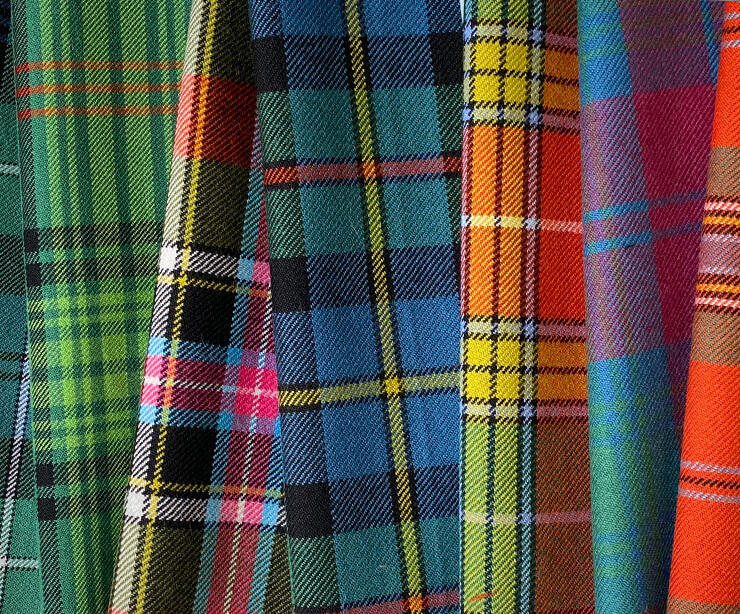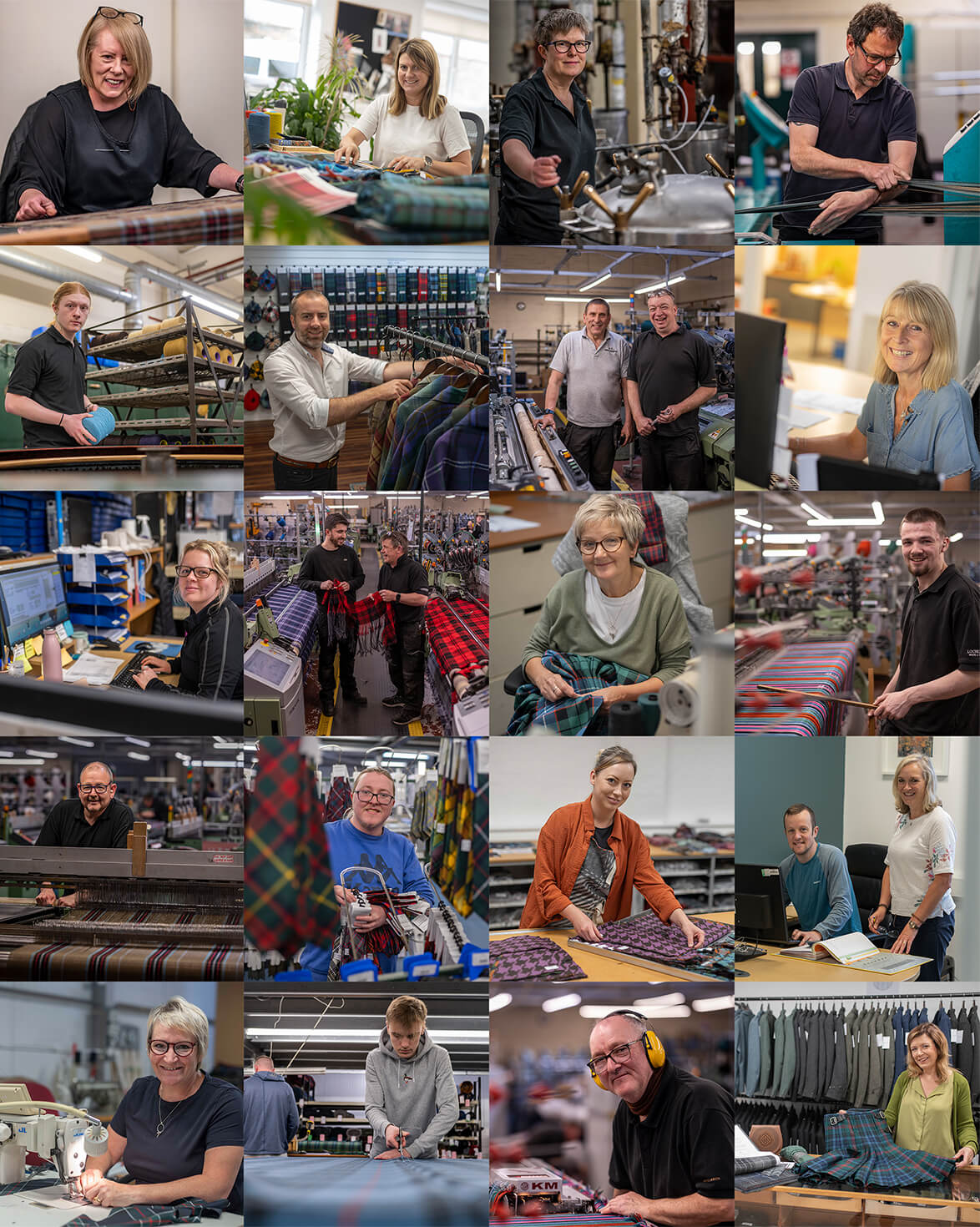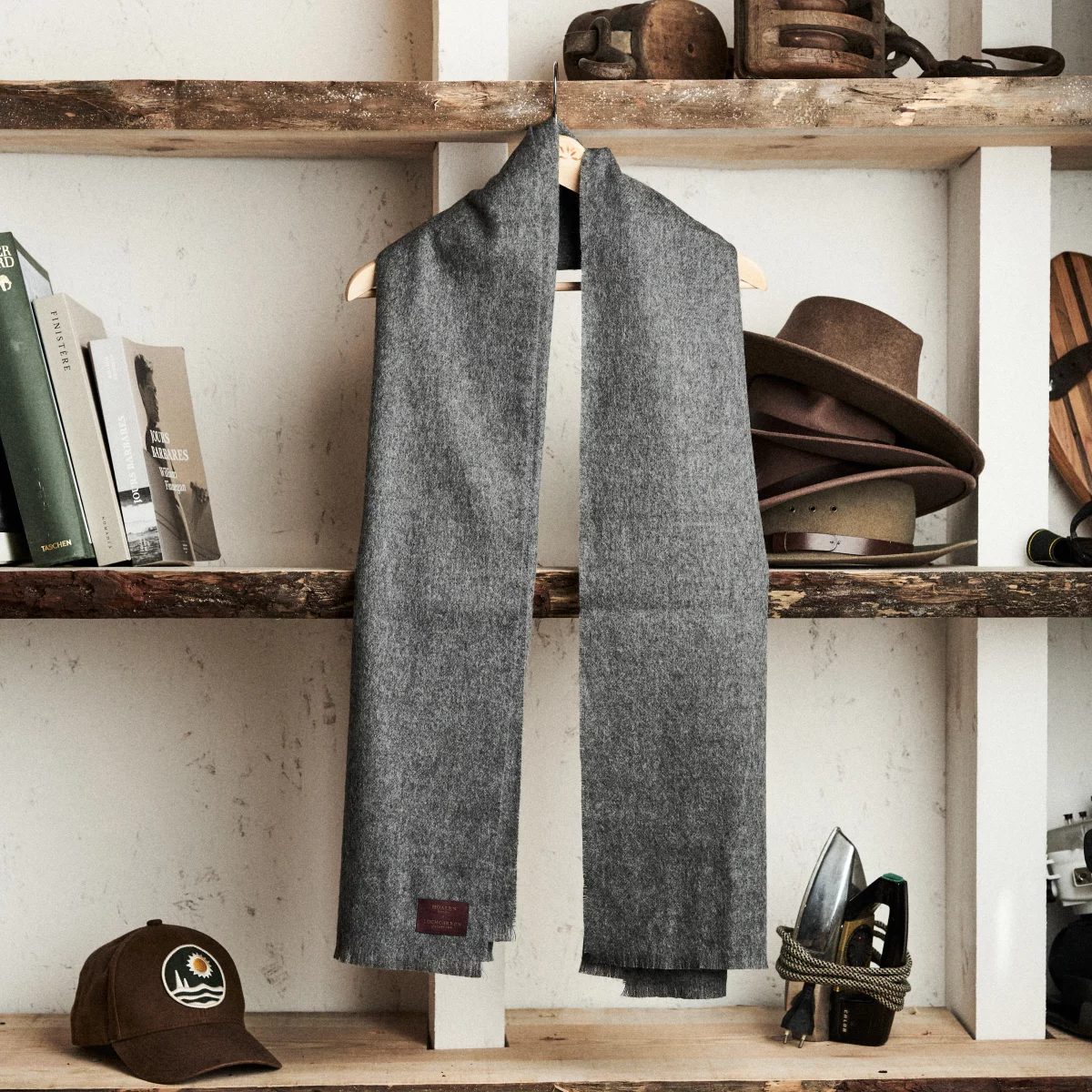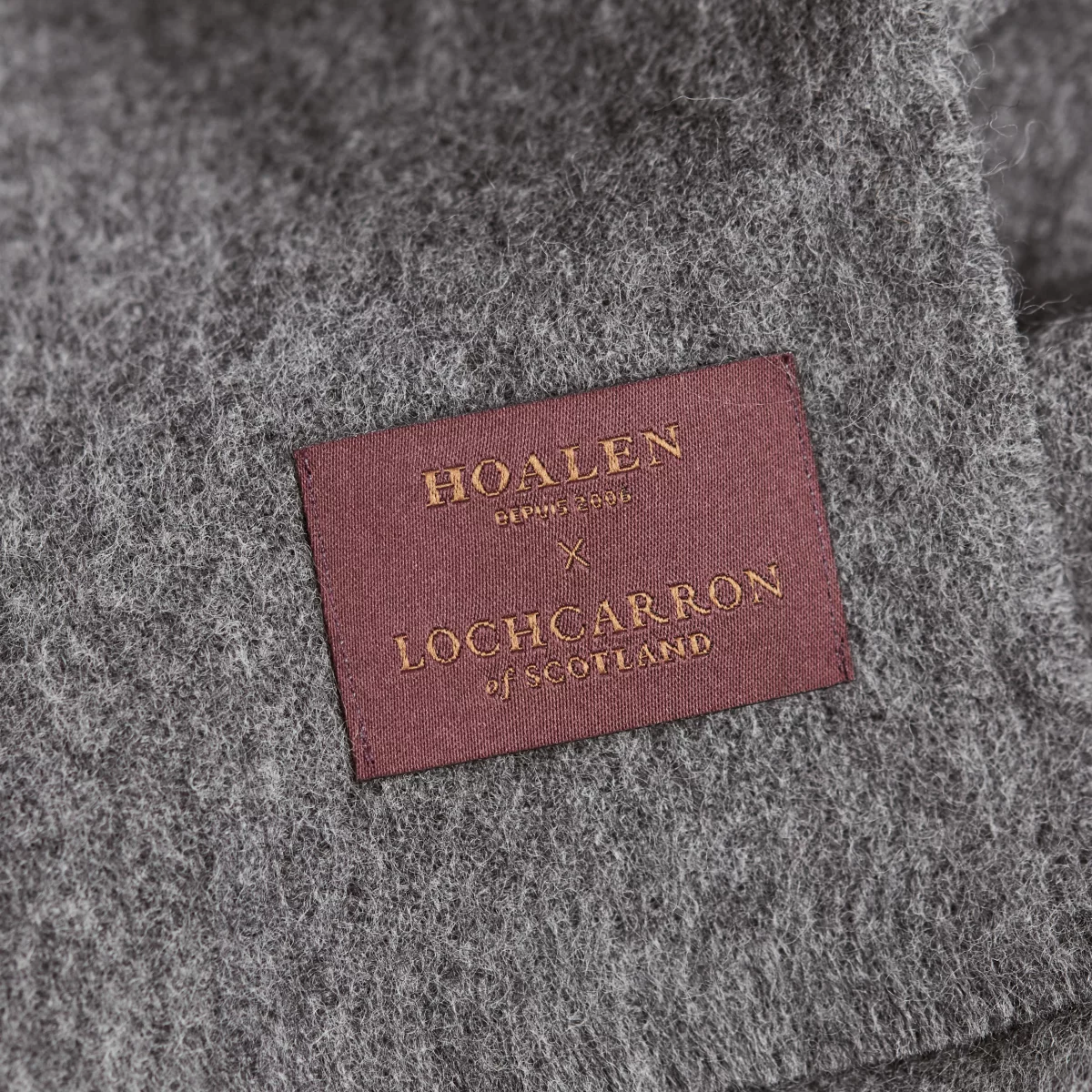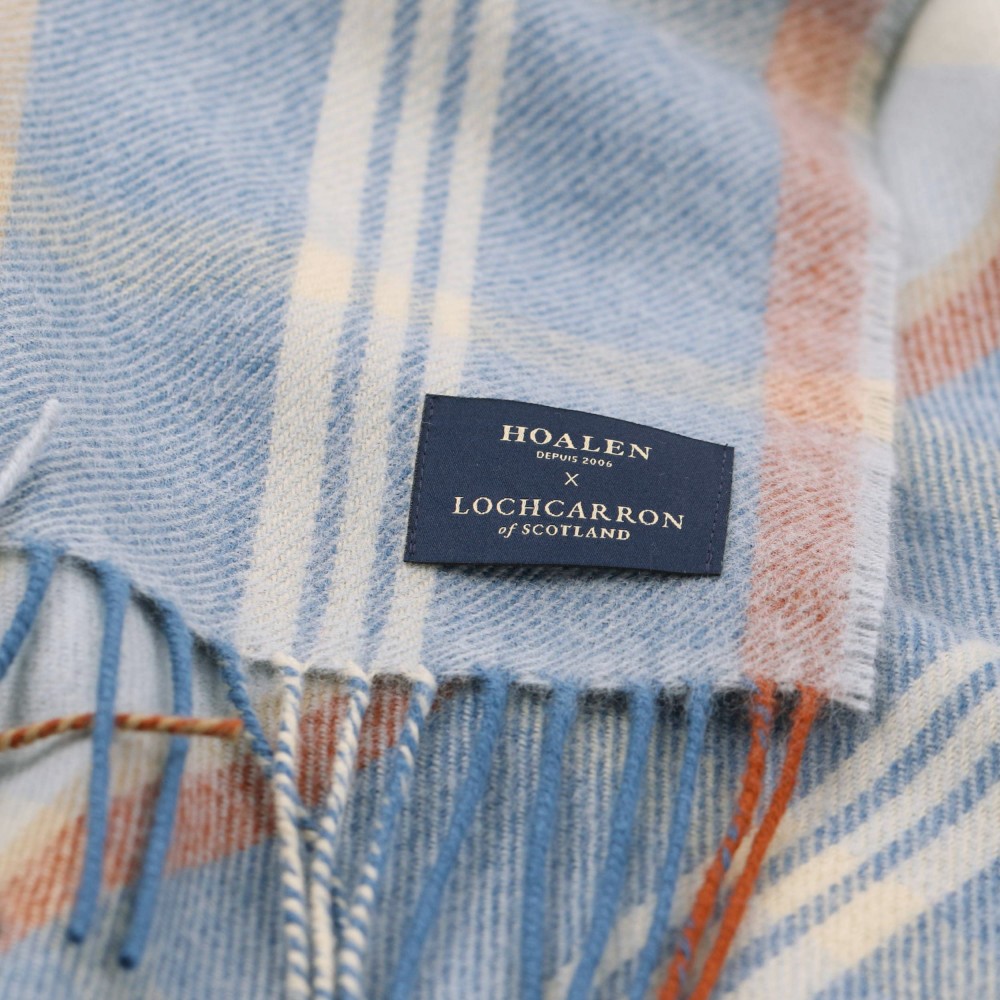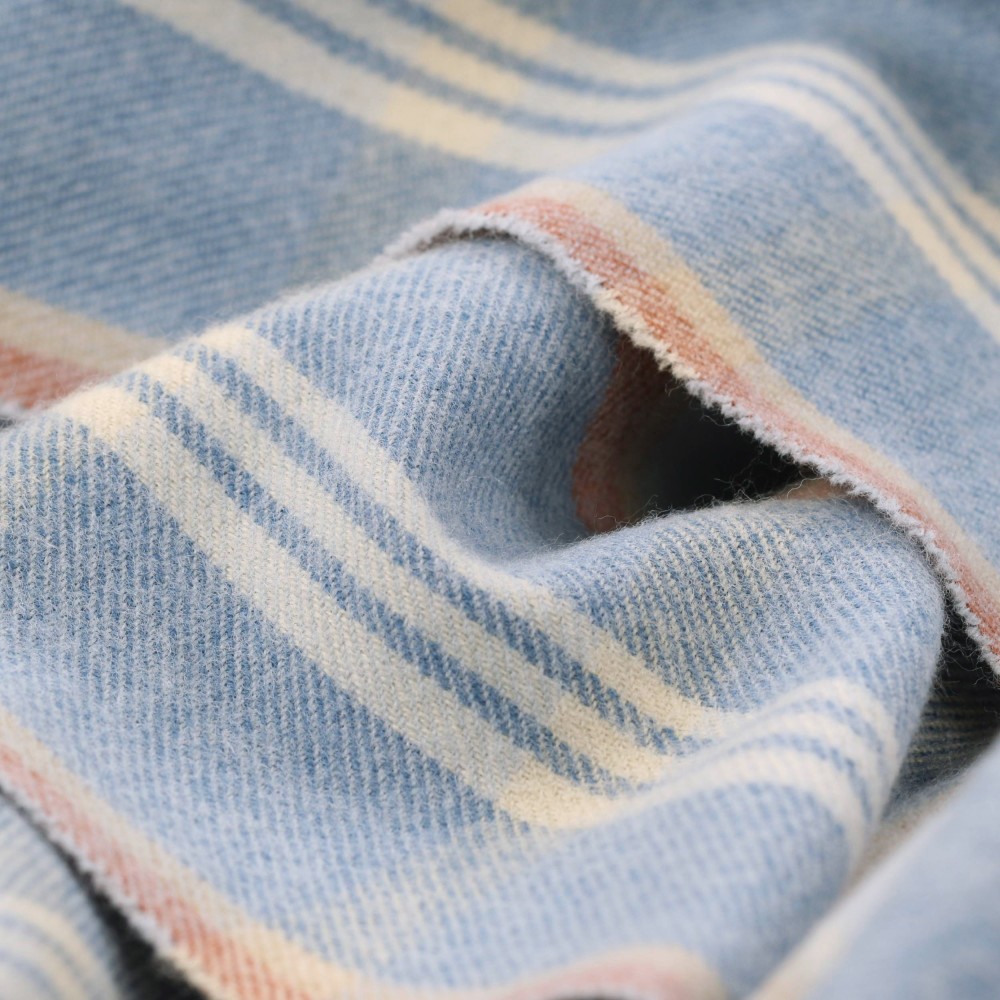Lochcarron of Scotland
Scottish craftsmanship at its finest.
With over two centuries of textile heritage, craftsmanship, and contemporary design, Lochcarron of Scotland has been committed from its beginnings to developing some of the finest traditional Scottish fabrics, constantly adapting to the evolving textile industry. As creators of artisanal employment on the Scottish coast, it was natural for Hoalen to turn to this tartan specialist in 2019 for the production of wool scarves.
A Shared Expertise
In 1892, a group of Scottish weavers formed a cooperative in the village of Lochcarron, in northern Scotland, to support local craftsmanship. These small producers pooled their expertise and together built a solid knowledge base, founded on passion and tradition, centered around Scottish tartan.
Specialized in tartan fabrics and accessories, the company experienced strong growth thanks to the expanding Scottish tourism market in the 1950s and 1960s. This wave manifested not only in Scotland but also extended to the Canadian and American markets, which were keen on this history-rich fabric. The company supplies Scottish tartans and Highland wear worldwide. During this period, Lochcarron continuously innovated by developing iconic fabrics and working on fabric quality.
As tartan became more mainstream in ready-to-wear fashion over the years, Lochcarron of Scotland succeeded in expanding its business opportunities and, with that, its location.
A unique heritage.
An emblem of Scottish history, tartan was born in the Scottish Highlands in the 17th century. Highlanders used local natural resources such as plants, roots, berries, and trees to dye the wool used in weaving simple checkered patterns. By varying the amounts of dye, each weaver could create lighter or darker colors and weave their own unique tartan pattern.
For several centuries, tartan served as clothing to cope with Scotland's capricious weather conditions, keeping the wearer cool during hot summer days and protecting them from strong winds, rain, and snow in winter. Over time, tartan became a symbol of belonging to a specific geographical area and clan.
Its history took a dramatic turn after the Jacobites' defeat at the Battle of Culloden in 1746. The Act of Proscription and the Dress Act banned Highland dress: tartan use declined and many patterns were lost. Born from a desire to see tartan reborn, the Act was repealed in 1782.
The weavers of Wilsons of Bannockbane and the Highland Society of London began collecting, designing, and manufacturing tartans. In 1822, King George IV's visit to Edinburgh truly popularized the wearing of tartan. During events orchestrated by the famous Scottish novelist Sir Walter Scott, dignitaries, guests, and the king himself were encouraged to wear their tartans, creating a spectacle of patterns and colors that brought tartan to the forefront.
Centuries later, tartan remains ubiquitous in fashion and extremely popular as Highland dress for weddings and formal events.
A Local Actor
Lochcarron remains established in Scotland. It is a world leader in Scottish tartan. Their headquarters is located in Selkirk, in the Scottish Borders. Today their production process is streamlined and efficient, preserving the traditional crafts involved in the textile trade. The pursuit of quality is at the forefront of the brand. Their tartans, the common thread of their history and future, are still proudly made in Scotland. From the wool used to the weaving of cloth and the creation of new patterns, the company aims to continue reinventing and capturing the enduring spirit of tartan and Scotland in each of their fabrics, scarves, and accessories.

